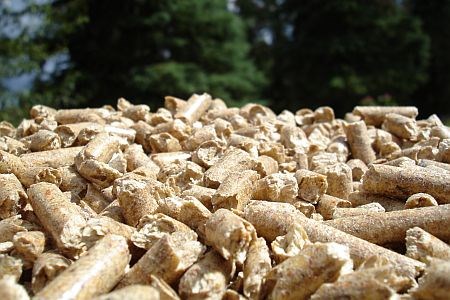Northeastern Ontario is being billed as the 'Saudi Arabia of biomass' and delegates who attended a North Bay conference heard of the opportunities and challenges to heat and power the region with this green crude.
About 400 delegates attended the Oct. 22-23 Harness Biomass conference at Nipissing University and heard presentations from industry, government and academic speakers on how to harvest, transport and process millions of cubic metres of forest slash into energy.
The event, hosted by Nipissing's fledgling Biomass Innovation Centre, attracted foresters, loggers, boilermakers, carbon traders, wood lot owners, industry heads and academic researchers from Ontario, the United States and Europe. The Ontario government's open competition for an estimated 10 to 16 million cubic metres of biomass supply has sparked plenty of public dialogue as to whether discarded tree tops and branches can revive the decimated forestry industry and many former mill towns.
The event made some incremental strides toward addressing lingering questions such as what the pricing regime is for biomass, the cost to harvest and transport it to mill sites, what pellet and boiler technology is available, and the biggest question of the overall reliability of supply.
Steve Morrison, vice-president of Sturgeon Falls Brush, said there are challenges of knowing the “true costs” of harvesting and covering transportation costs to end users.
“The jury is still out if it can be done,” he said.
Queen's University professor Warren Mabey called Ontario's Green Energy Act “an aggressive piece legislation” with an “incredibly ambitious target” of creating 50,000 jobs over three years in this emerging energy sector. But there are knowledge gaps in how to economically harvest biomass which will likely make up only 1.6 per cent of Ontario's energy supply. “There's been a lot of talk, but little action,” Mabey said on the fibre supply issue.
The conference also paraded some diametrically opposed views on biomass from district heating concept espoused by Ambrose Raftis, an official with the Green Temiskaming Development Corporation to Ontario Power Generation's more centralized plan to transport and burn wood pellets at provincial generating stations.
“Community energy is smart energy because it is produces energy where it is needed,” said Raftis, who wants to roll out these heating plans to towns across the North to create energy self-reliant communities and local jobs.
“We're proposing a much cleaner, greener approach to generation,” said Chris Young, Ontario Power Generation's vice-president of fossil fuel projects, in laying out the utility's plan to switch its generating stations from coal to wood fibre.
Young is in charge of the future of OPG's four generating plants, including two in northwestern Ontario that must be off-coal by 2014. The plants will have a reduced role in Ontario's power supply.
The Atikokan Generating Station is being converted to burn wood pellets. When operational in 2012, it will require 100,000 tonnes per year of fuel pellets, generally about five per cent of the wood harvested in northwestern Ontario.
He said the public's attitude toward renewable fuels is generally favourable, but there are clear concerns about having a sustainable harvest of forest resources and on the agriculture waste side “that biomass not impact the food supply.”
www.nipissingu.ca/biomass




